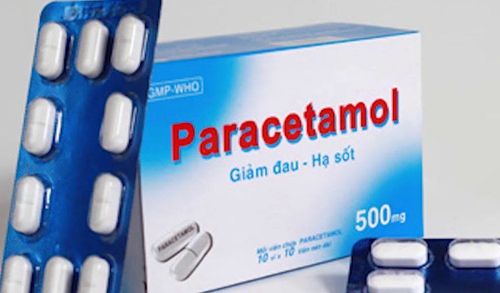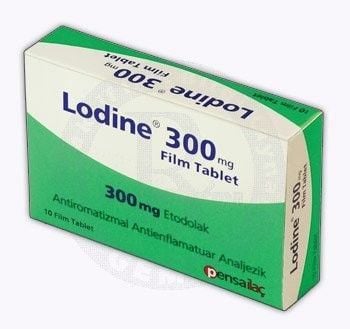This is an automatically translated article.
Diclofenac rectal medicine has the main ingredient Diclofenac, which has the effect of reducing pain, reducing fever, treating gout and joint pain. To ensure effective treatment and avoid side effects, patients need to take the drug exactly as directed by the doctor, professional pharmacist.1. What is rectal diclofenac?
Diclofenac anal tablets have the main ingredient Diclofenac, whose main effect is pain relief. The drug is manufactured and distributed by Quang Minh Pharmaceutical Trading Joint Stock Company. Using Diclofenac rectal properly will have quick pain relief for patients in clinical practice, so this is also a common indication.
Diclofenac anal tablets belong to the group of non-steroidal anti-inflammatory drugs, antipyretic, analgesic, treatment of gout and osteoarthritis pain.
Ingredients in each tablet: 100mg Diclofenac and excipients just enough Dosage form: suppository suppository. Packing form: box of 1 blister x 5 tablets
2. Indication of Diclofenac rectal medicine
Diclofenac is a derivative of phenylacetic acid - this is a non-steroidal anti-inflammatory agent. Diclofenac's mechanism of action is through inhibition of cyclooxygenase, thereby reducing the release of chemical mediators of the inflammatory response (prostaglandin, prostacyclin and thromboxane), thereby reducing pain. Diclofenac rectal tablets are indicated in the following cases:
Chronic chronic arthritis (polyarthritis, spondylitis, degenerative joint disease, ankylosing spondylitis, ...) Acute pain like pain Acute shoulder pain, back pain, tendonitis,... Patients with acute and chronic gout Pain relief after surgery: after cesarean section, vaginal birth, plastic surgery, ... Reducing menstrual pain. In particular, using a single rectal dose of Diclofenac in combination with acetaminophen infusion 2 hours before spinal anesthesia for women having a caesarean section, has a strong, safe and effective pain relief effect.
Dosage: 1 tablet/day, put before going to bed.
So in case of drug overdose, what to do? Diclofenac overdose is manifested by an aggravation of side effects. Accordingly, the patient should immediately contact the nearest medical facility for prompt treatment.
3. Diclofenac rectal suppositories are contraindicated
Absolutely do not use Diclofenac rectally for people who are sensitive to non-steroidal anti-inflammatory drugs. Patients with peptic ulcer disease, asthma, bronchospasm, cardiovascular disease Patients with severe liver and kidney failure.. Patients being treated with anticoagulants (coumarin, ...)
4. Diclofenac rectal drug interactions
Like other non-steroidal anti-inflammatory drugs, Diclofenac increases the risk of peptic ulcers by reducing protaglandin synthesis. Therefore, diclofenac should not be co-administered with other anti-inflammatory drugs of the same class to reduce the risk of gastrointestinal ulceration and bleeding.
Diclofenac increases the risk of bleeding when used with oral anticoagulants, hepariin, ticlopidine. Lithium and digoxine: Diclofenace increases the toxicity of these drugs when taken together. Potassium-sparing diuretics: Concomitant use with Diclofenac increases blood potassium. Cyclosporin: when used with Diclofenac increases nephrotoxicity. Methotrexate: When diclofenac is used within 24 hours before or after methotrexate is administered, caution should be exercised because it may increase methotrexate toxicity.
5. Diclofenac rectal side effects
During treatment with rectal diclofenac, patients may experience some undesirable effects such as:
Common: fatigue, headache, tinnitus, nausea and vomiting, loss of appetite, fullness gas, diarrhea, epigastric pain, aminotransferase. Uncommon: generalized edema, hypotension, pruritus, somnolence, anxiety, agitation, ... Rare: meningitis, leukopenia, hepato-nephrotoxicity, ... In case of any encounter If you have any unusual symptoms while taking the drug, please contact your doctor immediately for timely instructions.
6. Instructions on how to put Diclofenac rectally
For Diclofenac anal tablets to promote optimal effectiveness, you need to store the medicine in a cool place, preferably below 30 degrees C.
Before placing the medicine, it is necessary to clean hands and anus with soap, disinfectant water. The patient lies comfortably on the bed, leaning to one side, one leg flexed. Use your hand to gently insert the tablet into the rectum, placing the full length of the tablet. Then lie still for 15-20 minutes. Wash hands clean.
7. Some notes when using Diclofenac rectal tablets
For pregnant women: When using any drug on pregnant women, it is necessary to be very careful and only use it when absolutely necessary. Studies have demonstrated that using Diclofenac during the third trimester of pregnancy has the risk of inhibiting uterine contractions, renal failure in the fetus. For nursing women: Diclofenac is rarely excreted in human milk. However, there are no data on the effects of Diclofenacc in nursing infants. Breastfeeding women can use Diclofenac rectally in case of need. Patients are not allowed to arbitrarily increase/reduce the dose, stop taking the drug or use it without a prescription, but must strictly follow the doctor's instructions to promote the effectiveness of the drug and avoid serious consequences. regret. If the drug shows signs of organoleptic (discoloration, deformation, ...) then do not use that pill. Diclofenac rectal medicine has the main ingredient Diclofenac, which has the effect of reducing pain, reducing fever, treating gout and joint pain. To ensure effective treatment and avoid side effects, patients need to take the drug exactly as directed by the doctor, professional pharmacist.
Follow Vinmec International General Hospital website to get more health, nutrition and beauty information to protect the health of yourself and your loved ones in your family.
Please dial HOTLINE for more information or register for an appointment HERE. Download MyVinmec app to make appointments faster and to manage your bookings easily.













